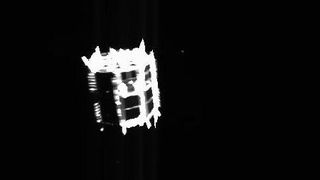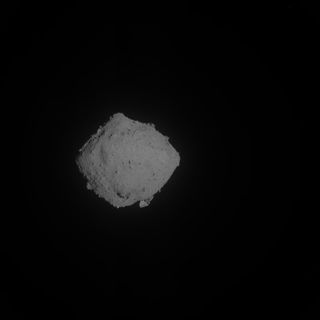Japan's Hayabusa2 Probe Drops Its Last Rover on Asteroid Ryugu

Japan's asteroid mission has deployed its last rover to explore Ryugu's rocky surface.
The Hayabusa2 spacecraft has been exploring the asteroid since June 2018, and it deployed three other landers to the asteroid's surface last fall. Then, the mission switched its focus to sample collection. But now, Hayabusa2 is executing its last remaining task before turning for Earth: deploying its final rover, dubbed MINERVA-II2.
That process began on Wednesday (Oct. 2) when the main spacecraft lowered itself to 0.6 miles (1 kilometer) above the asteroid's surface to release MINERVA-II2. That's much higher above the surface than its twins, MINERVA-II1A and MINERVA-II1B, were deployed, at about 165 feet (50 meters) above Ryugu's surface.
Related: Japan's Hayabusa2 Drops Target Markers on Asteroid Ryugu
The different approach is necessary because this rover is tackling different questions than its predecessors. The Hayabusa2 scientists want to be able to study the rover's long, slow path down to Ryugu's surface, with the main spacecraft watching its journey from an altitude of about 5 miles (8-10 km). The lengthy descent will also let scientists more accurately study the gravitational field exerted by the asteroid.
MINERVA-II2 was expected to leave the main spacecraft traveling at a speed between 5.1 and 6.7 inches per second (13 to 17 centimeters per second). The separation maneuver took place at 11:57 p.m. EDT Oct. 2 (Oct. 3 at 0357 GMT, or 12:57 a.m. local time at mission control in Japan).

Before the deployment occurred, Hayabusa2 dropped two target markers onto the asteroid in a rehearsal maneuver conducted on Sept. 16. The MINERVA-II2 rover is expected to continue work until Oct. 8.
Get the Space.com Newsletter
Breaking space news, the latest updates on rocket launches, skywatching events and more!
The main Hayabusa2 spacecraft will turn to Earth before the end of this year, ferrying the sample container full of precious bits of Ryugu. That capsule will land in the deserts of South Australia late in 2020, giving scientists an opportunity to analyze the asteroid in terrestrial labs.
- Watch Japan's Hayabusa2 Grab a Piece of an Asteroid in This Incredible Video!
- Shadow Selfie! Japanese Asteroid Probe Snaps Amazing Post-Landing Pic
- Japan's Hopping Rovers Capture Amazing Views of Asteroid Ryugu (Video)
Email Meghan Bartels at mbartels@space.com or follow her @meghanbartels. Follow us on Twitter @Spacedotcom and on Facebook.

Join our Space Forums to keep talking space on the latest missions, night sky and more! And if you have a news tip, correction or comment, let us know at: community@space.com.

Meghan is a senior writer at Space.com and has more than five years' experience as a science journalist based in New York City. She joined Space.com in July 2018, with previous writing published in outlets including Newsweek and Audubon. Meghan earned an MA in science journalism from New York University and a BA in classics from Georgetown University, and in her free time she enjoys reading and visiting museums. Follow her on Twitter at @meghanbartels.
